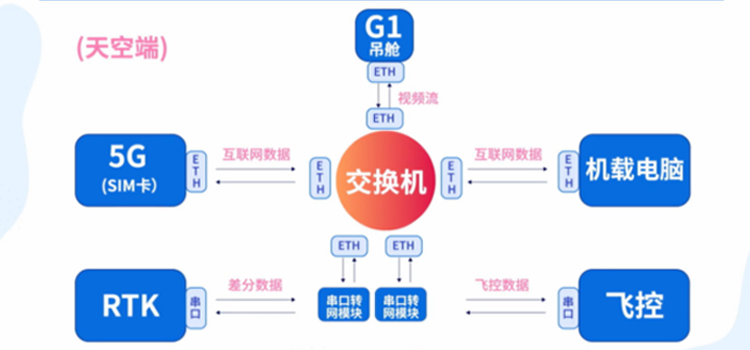Against the backdrop of the rapid development of modern technology, drone technology has been widely used in various fields, from delivery to agricultural surveillance, drones are becoming more and more common. However, the effectiveness of drones is largely limited by their communication systems, especially in urban environments like cities where there are many tall buildings and obstacles. To break through these limitations, the introduction of 5G communications on drones is a very effective means.
What is 5G Communications?
5G, the fifth generation of mobile communications technology, marks a massive network performance improvement. Not only does it deliver faster data transfer speeds than 4G, up to 10Gbps, it also dramatically reduces latency to less than 1 millisecond, greatly improving network responsiveness and reliability. These characteristics make 5G ideally suited for applications that require high data bandwidth and very low latency, such as remote control of drones and real-time data transmission, thus driving innovation and application of the technology in a number of fields.
The Role of 5G Communications in Drones
-Low Latency and High Bandwidth
The low-latency nature of 5G technology allows drones to transmit high-quality data in real time, which is critical to ensuring flight safety and mission efficiency.
-Wide Coverage and Long-Range Communication
While traditional drone communication methods are limited by distance and environment, the wide coverage capability of 5G communications means that drones can fly freely over a wider area without geographical restrictions.
How 5G modules are adapted on drones
-Hardware Adaptation
In the sky end, the 5G module flight control/onboard computer/G1 pod/RTK are connected to the switch, and then the 5G module is used for long-distance communication.


The ground side needs to connect to the internet via PC to get the data from the UAV, and if there is a RTK base station, the PC also needs to connect to the RTK base station to get the differential data.
-Software Adaptation
In addition, after the hardware is configured, if there is no software configuration, the local PC and the UAV's network belongs to a heterogeneous LAN and can't communicate, to solve this problem, we recommend using ZeroTier for intranet penetration, in simple terms, intranet penetration is a way to let our ground receiver and the UAV's transmitter to form a virtual LAN and communicate directly.

As shown in the figure, we take two airplanes and a local PC as an example, both drones and local PCs are connected to the Internet. One of the drone IP were 199.155.2.8 and 255.196.1.2, the IP of the PC is 167.122.8.1, it can be seen that these three devices are located in the three LANs can not directly communicate with each other, then we can use the offsite LAN penetration tool zerotier to network, by adding each device to the same account, the zerotier management page. By adding each device to the same account, you can assign virtual IPs in the zerotier management page, and these devices can communicate with each other through the virtual IPs set for networking.
Adapting 5G technology to drones not only improves communication efficiency, but also expands the use of drone scenarios. In the future, with the further maturation and popularization of the technology, we can foresee that drones will play a greater role in more fields.
Post time: May-07-2024